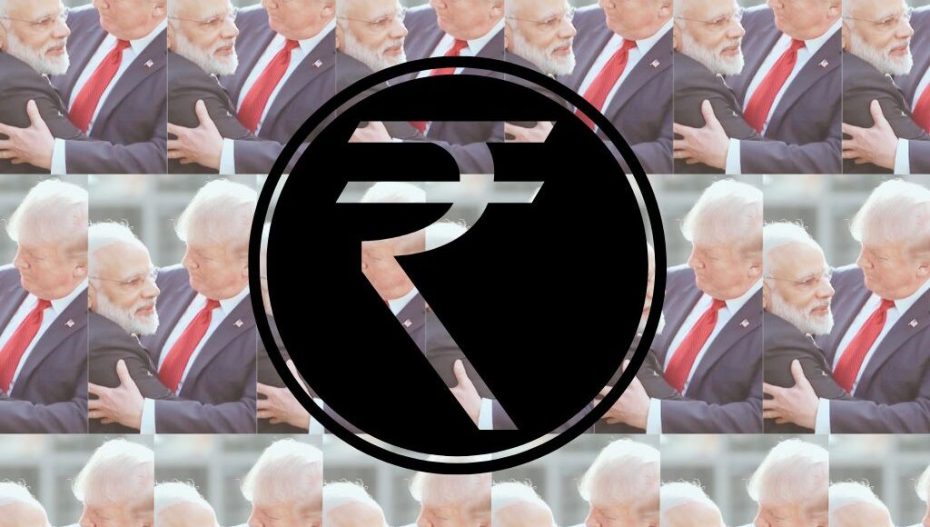On the eve of the Lok Sabha poll results, both Narendra Modi and Amit Shah gave an unprecedented call urging people to buy shares in the market on the assumption that BJP would win a decisive victory and the stock markets would be on a roll. However, after the results, the stock market crashed over 6% and Rs 31 trillion of wealth was eroded in just one day.
The markets somewhat retraced and stabilised subsequently and gained for a few months but again started wobbling after September as data on macro economy and later the quarterly results of NIFTY companies started showing significant weakness. In the midst of all this came statements from top CEOs of Nestle, HUL, Asian Paints and other consumer companies that urban consumption was weakening further as high inflation was eating into the real incomes of the middle class. All such negative news is cumulatively impacting market sentiments.
What is seriously worrying the investors is the massive, indeed precipitous, sell off by the Foreign Institutional Investors (FIIs) in the last month and a half as the Sensex has crashed 10%. A large number of individual stocks are down 20 % to 30%, which is normally defined as a bear market.
The FIIs have pulled out $15 billion in just the last one and a half months. The last time withdrawal on such a scale happened was in 2008 after the global financial meltdown when the Sensex crashed over 40%. Just for comparison, the FIIs had pulled out over $15 billion in all of 2008 but this time such a large withdrawal has happened in just seven weeks. Fortunately markets have fallen just 10% because domestic mutual funds and possibly institutional investors like LIC have supported the market. This trend has resulted in some loss of confidence as big investors who were most emphatically bullish on India have started saying China is providing more value as stocks are much cheaper there.
Suddenly, China has become the flavour of the season as a lot of FII money is incrementally moving to Chinese stocks over the past two months. This is triggered partly by China’s monetary stimulus package delivered sometime ago and another bazooka in the form of a $1.4 trillion stimulus package is expected shortly in anticipation of the Trump tariffs on China. Indeed China is very proactive in anticipating the disruption that a Trump administration may cause across the world.
According to Jehangir Aziz, economist at JP Morgan, New York, the Trump tariffs will disrupt the emerging markets equilibrium as the US dollar is likely to strengthen and this could weaken the emerging market currencies, thus affecting business sentiment and disrupting investment flows.
Aziz says the last time Trump imposed heavy import tariffs in 2018, the Chinese immediately depreciated their currency and pivoted their exports to the Asian and Latin American markets. China may repeat that act this time too, he says. However if China depreciates its currency India and other emerging economies too will have to follow. The Indian rupee is already in decline mode, testing Rs 85 to a dollar level, even before Trump has formally taken over as president. The Trump sentiment is already gripping the world economies. Though sensible economists across the ideological spectrum in the US are cautioning Trump that higher tariffs against China and other emerging economies combined with drastic deportation of illegal immigrants will be hugely inflationary, it remains to be seen how things play out next year.
India will have to come up with a substantive policy response like China has to counter the possible negative economic impact on its inward foreign portfolio investments, exports, employment and currency after Trumponomics takes effect.
At present we hear only tentative statements from the government that for India, Trump may create new opportunities. Trump has already declared India as a big tariff offender during his poll campaign. He will bargain very hard on everything in spite of his much touted personal chemistry with Modi. Remember how in his earlier tenure he stunned India by removing the long-standing preferential exports to the US worth $4 billion under a special GSP tariff scheme meant to aid the less developed economies. A trade negotiator told me that personal chemistry between heads of state is highly overrated in such situations.
India will have to fend for itself by taking innovative measures like China is already doing. Time is of the essence. The response to Trumponomics has to be swift. In this regard, Uday Kotak, chairman of Kotak Mahindra Bank, has coined the term ROTI (return on time invested). If you lose time you will lose economic value. Hitherto Modi has wasted a lot of time attempting big policy ideas which have not yielded the desired results. Wrong diagnosis may also have been a reason for that.
From hereon, India will have to carefully calculate the return on time invested when it comes to responding to global economic headwinds. The current state of the stock markets is also signalling that very clearly. Modi and Shah must remember they cannot build self-serving narratives especially when dealing with the impact of global economic headwinds.
(This piece was first published on The India Cable – a premium newsletter from The Wire & Galileo Ideas – and has been updated and republished here. To subscribe to The India Cable, click here.)
This article was originally published on The Wire, on November 16.
Also Read: Call Logs, Forged Medical Reports Expose PM-JAY Fraud Tied to Rajkot Paediatrician













